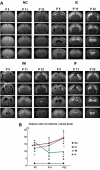Mesenchymal stem cells transplantation for neuroprotection in preterm infants with severe intraventricular hemorrhage
- PMID: 25076969
- PMCID: PMC4115065
- DOI: 10.3345/kjp.2014.57.6.251
Mesenchymal stem cells transplantation for neuroprotection in preterm infants with severe intraventricular hemorrhage
Abstract
Severe intraventricular hemorrhaging (IVH) in premature infants and subsequent posthemorrhagic hydrocephalus (PHH) causes significant mortality and life-long neurological complications, including seizures, cerebral palsy, and developmental retardation. However, there are currently no effective therapies for neonatal IVH. The pathogenesis of PHH has been mainly explained by inflammation within the subarachnoid spaces due to the hemolysis of extravasated blood after IVH. Obliterative arachnoiditis, induced by inflammatory responses, impairs cerebrospinal fluid (CSF) resorption and subsequently leads to the development of PHH with ensuing brain damage. Increasing evidence has demonstrated potent immunomodulating abilities of mesenchymal stem cells (MSCs) in various brain injury models. Recent reports of MSC transplantation in an IVH model of newborn rats demonstrated that intraventricular transplantation of MSCs downregulated the inflammatory cytokines in CSF and attenuated progressive PHH. In addition, MSC transplantation mitigated the brain damages that ensue after IVH and PHH, including reactive gliosis, cell death, delayed myelination, and impaired behavioral functions. These findings suggest that MSCs are promising therapeutic agents for neuroprotection in preterm infants with severe IVH.
Keywords: Cell transplantation; Hydrocephalus; Intracranial hemorrhage; Mesenchymal stromal cells; Premature infant.
Conflict of interest statement
No potential conflict of interest relevant to this article was reported.
Figures



References
-
- Thorp JA, Jones PG, Clark RH, Knox E, Peabody JL. Perinatal factors associated with severe intracranial hemorrhage. Am J Obstet Gynecol. 2001;185:859–862. - PubMed
-
- Vohr BR, Wright LL, Dusick AM, Mele L, Verter J, Steichen JJ, et al. Neurodevelopmental and functional outcomes of extremely low birth weight infants in the National Institute of Child Health and Human Development Neonatal Research Network, 1993-1994. Pediatrics. 2000;105:1216–1226. - PubMed
-
- International PHVD Drug Trial Group. International randomised controlled trial of acetazolamide and furosemide in posthaemorrhagic ventricular dilatation in infancy. Lancet. 1998;352:433–440. - PubMed
Publication types
LinkOut - more resources
Full Text Sources
Other Literature Sources

